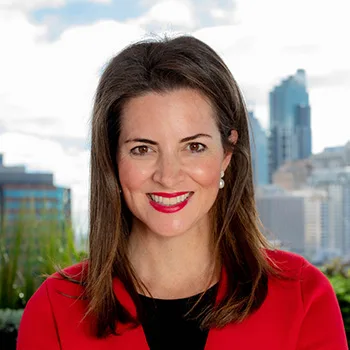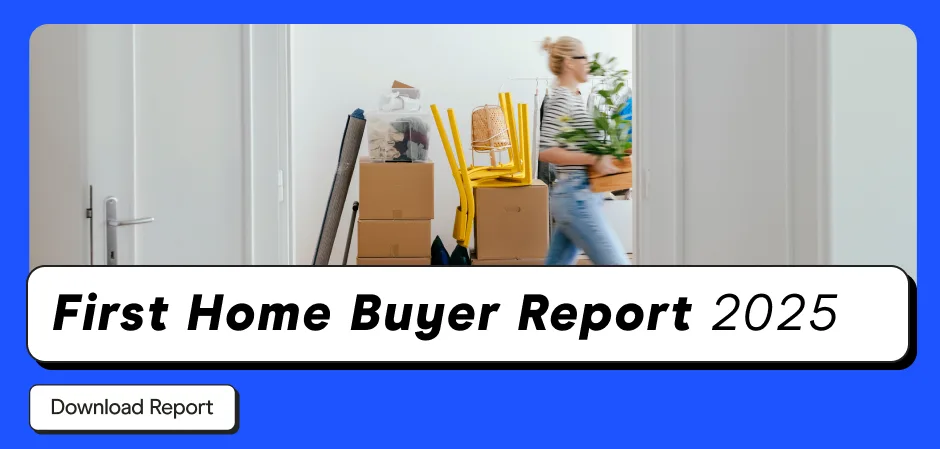Finder's First Home Buyer Report explores the motivations, behaviours and values of Australian first home buyers navigating one of the most expensive housing markets in the world. This report also tracks key trends that have emerged since Finder's previous First Home Buyer Report in 2022.
With many prospective buyers sidelined by the high interest rates of the past two years, understanding the mindset of first home buyers is especially important. Following two recent cash rate cuts by the Reserve Bank of Australia (RBA) and with more expected, some buyers are finally getting their first peak into Australia's elusive property market.
Key statistics
- Most (60%) first home buyers say recent interest rate cuts influenced their decision to buy now.
- 1 in 4 buyers are looking interstate or in a different region.
- 70% of first home buyers are buying or have bought with less than a 20% deposit.
- Nearly 2 in 3 (65%) spend, or expect to spend, 30% or more of their income on mortgage repayments.
Australia's exceptional housing market
This pattern has repeated itself over the past two decades: everyone, from pundits to punters, reach a consensus that property prices can't rise any further – then they do exactly that.
The Australian housing market is in a league of its own. Residential property accounts for 64% of household wealth, compared to a global average of less than 50% and when adjusted for population, the value of Australian property is double that of the United States.
Since the Global Financial Crisis (GFC) in 2008, Australian house prices have consistently outpaced both the United States and the UK.
Australia's exceptional housing market makes the experience of first home buyers especially important to examine. This report investigates the challenges of saving for a deposit and managing a mortgage, the role of family and government assistance, and the pressure from all sides to "climb the property ladder".
First home buyer fears
- The percentage of first home buyers who bought out of a worry that property prices would soon become too expensive has increased from 31% in 202 to 38% in 2025.
- 79% of mortgage holders say they are happy, however this drops to 67%, below that of renters, for mortgage holders who struggle to pay their mortgage.
- Nearly 2 in 3 (65%) first home buyers are already, or expect to be, in mortgage stress (defined as spending 30% or more of gross income on mortgage repayments).

"The dominant motivator, as this report has shown, is no longer just the aspiration to own a home – it is the fear of missing out. FOMO, fuelled by rising prices and social pressure, has overtaken traditional financial planning for many buyers."
What is the fuelling the fear?
- Almost two in three (61%) buyers say they have missed out on a property they were seriously considering.
- Being outbid by a competing buyer is the most common reason, affecting one in three (33%) buyers.
- The time first home buyers spend searching for a home is also increasing, likely due to rising competition, over the past three years, the number of buyers spending a year or more searching for a home has risen by 24%.
The cost of acting too quick
- 70% of first home buyers in 2025 won't wait to save the typical 20% deposit before purchasing.
- In another sign that FOMO is influencing buyers, almost half (47%) of first-time buyers paid more than they budgeted, a significant increase from 38% in 2022.
- 1 in 7 (14%) Australians who bought their first home in the past 12 months have no savings left, while 1 in 3 (33%) have less than $10,000 remaining.
- Almost half (45%) of first home buyers who purchased in the past year say they regret their decision.

"This kind of financial risk-taking reflects not just ambition, but anxiety – the belief that if you don't buy now, you may never be able to."
How first home buyers are managing costs
- One-third of new buyers (34%) didn't take out their home loan with their usual bank.
- A quarter of first home buyers (24%) are searching for their home in a different region or state to where they currently live.
- 78% of first-time buyers say they have applied for, or plan to apply for, government support schemes.

"These are rational responses to an irrational market – small acts of agency in a housing system that often feels stacked against them."
The number of solo buyers continues to drop
- The proportion of suburbs where the average Australian can afford a mortgage on the median house has fallen from 57% in 2017 to just 16% in 2025.
- The proportion of single first home buyers has fallen from 45% in 2021 to 39% in 2025.
- Our previous report found that men (44%) are more likely than women (38%) to buy independently. This gap has widened, with only 34% of women purchasing as sole buyers in 2025.

"Buying a property together is a real milestone within your relationship. Nothing says 'commitment' more than sharing a mortgage worth hundreds of thousands of dollars! But be wary: if you can't see yourself making the final mortgage repayment with this person at your side, then you shouldn't be entering into the mortgage with them now."
The bank of Mum and Dad
- In 2025, 17% of first home buyers say they received money from their parents, up from just 11% in 2022.
- Among buyers without support, 40% took 5 years or more to save a deposit, compared to just 29% of those who received family assistance.
- The average assisted buyer has 41% more leftover in their savings after buying their first home.

"There's no doubt the current system asks too much of buyers, particularly younger Australians and those without family wealth to draw on. Owning a home should not require a decade of saving, the help of your parents or the acceptance of mortgage stress as a norm."
Sources
Ask a question

